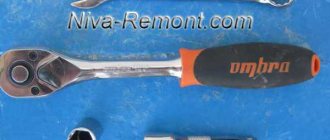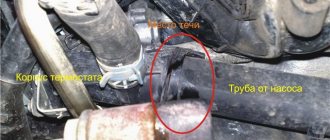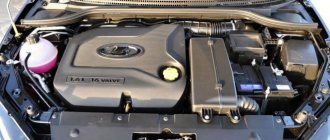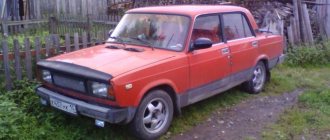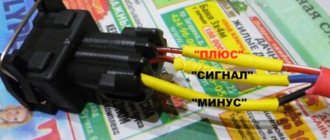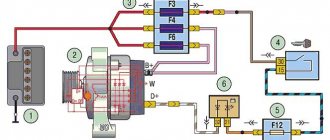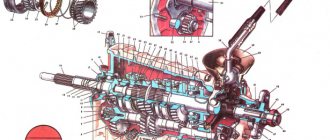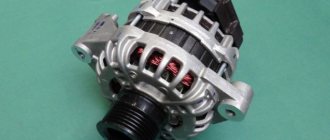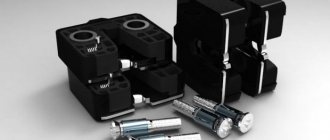According to Rosstat, a quarter of the entire vehicle fleet of the Russian Federation is occupied by domestic cars, and every fifth one comes off the assembly line of the Volzhsky Automobile Plant. Car enthusiasts value Ladas for their affordable price, practicality and adaptability to Russian conditions. The latest models have excellent design, spacious interiors and are equipped with modern navigation aids.
As a rule, domestic cars are chosen by people with low incomes. They note another important advantage - inexpensive and trouble-free machine maintenance. Vase repairs are carried out by many technical centers, and there is also no shortage of spare parts. It remains to find among this set one where the car will be repaired efficiently, quickly and at a reasonable price.
Avtoreshenie.ru, a portal with an extensive database of auto repair shops operating in Moscow and the region, will help solve this problem.
How to find your Auto Solution
Our database includes only verified auto centers, which is confirmed by your real reviews. Positive reviews increase the company's rating, moving it higher in the list of results, while negative reviews lead to removal from the database. Thus, the list of car services is constantly up to date, and car owners have more and more chances to have their car properly repaired.
Using the portal is easy - you need to indicate the car brand and service, based on the nature of the malfunction. You will see a list of all Lada service stations ready to solve the problem. Additionally, you can filter out unnecessary offers using the following parameters:
- work schedule (some service stations work around the clock);
- location (it is shown on Yandex maps)
- prices for services;
- rating and status of the company (independent or official).
The remaining offers can be viewed in more detail by clicking on the name. The section that opens will contain even more information, where the company’s managers indicate all the advantages of contacting their VAZ car service:
- production capacity;
- loyalty programs;
- related services (washing, applying protective compounds, diagnostics);
- amenities for clients (cafe, TV, free wi-fi);
- contact information, including links to own websites;
- price lists;
- warranty obligations.
There you can also see photos of the auto center and evaluate the access roads and equipment of the workshop.
After contacting the workshop, do not forget to leave your review on the portal. It will help other car owners navigate the situation, and help us promptly update information about reliable car services.
Weaknesses of front-wheel drive VAZ cars
Independent experts involved in diagnostics and repair of the latest VAZ models tell us what problems owners of Lada Largus, Vesta and Grants most often encounter:
- failure of the clutch pedal sensors, ABS and the wires connecting them;
- corrosion in places of welding seams;
- problems with the front suspension after 30–40 thousand kilometers – ball joints and steering ends suffer;
- leaking oil seals on all-wheel drive models;
- the need for frequent valve adjustments.
In general, experts note the increased quality of domestic cars, so more and more VAZ car owners visit the service center to carry out routine diagnostics rather than repairs. Modern equipment allows you to see all hidden defects that can turn into problems over time.
It doesn’t matter what exactly happened to your car - an accident, a breakdown, or just a need for another inspection -
take a look at Avtoreshenie.ru, choose a car repair shop and you will always have peace of mind for your swallow!
Maintenance and repair of VAZ-2107: I want you to repair me
A little bit of history
By and large, the “seven” is the result of the sluggish evolution of the first model Zhiguli, the VAZ-2101. The idea was not bad - to restyle the VAZ-2105, but it somehow didn’t turn out very well. Externally, the shape of the hood, trim, and slightly of the trunk lid were changed, and new front and rear bumpers appeared. The interior was modernized a little more: the driver and front passenger seats received backrests made integral with the headrests, and the interior trim changed. The main difference lies in the new instrument panel and dashboard. The power units were also updated: at the time of the release of the first VAZ-2107, it could be equipped with a new carburetor engine with a capacity of 77 hp. This was in 1982, and from that moment until the end of production in 2012 in Russia (they were assembled in Egypt until last year), the “seven” tried many engines. Among them were weak “five” engines with a volume of 1.3 liters, there were 1.6-liter injection engines, and the apotheosis of progress was a “spit” in the direction of Mazda engineers: a 140-horsepower rotary piston engine of its own design. But such cars are practically impossible to find, so we won’t talk about them for now.
In 2001, VAZ began offering three trim levels of the “Seven”: “standard”, “norm” and “luxury”. It’s a pity that the series never included the designers’ interesting proposal to build a mini-fridge under the rear shelf: the selection committee considered it too chic, so there were no such configurations. And it’s good: otherwise the Toyota Land Cruiser 200 would have a heart attack from the sight of the “luxury” VAZ-2107, and even with a mini-fridge. In total, there are ten different modifications of the “seven”. She held on until the last, only Granta was able to remove her from the assembly line, which in itself is very good. The cost of the simplest VAZ-2107 at that time was just under two hundred thousand rubles. Now this seems like a ridiculous amount (thanks to inflation), and even then it was the most affordable car in this class.
Today, the “seven” of the last years of production can be bought for 100-180 thousand, depending on the condition and adequacy of the owner, and cars of the early 80s can be bought for 20-30 thousand. Let's not go to extremes and look at a 2004 car, the mileage of which is 82 thousand kilometers. Its engine is a 1.6-liter carburetor with a power of 75 hp. Our copy is an example of a real clear “boyish” car - the spoiler alone is worth it! But they serve him well: the owner of the “Seven” does almost everything himself, knows his car, and doesn’t hide any secrets. And what secrets could there be? You probably won’t find anything simpler than the “seven”.
Engine
The power unit of the “classic”, like the rest of its design, firmly follows the army principle “if you don’t know how, we’ll teach you, if you don’t want to, we’ll force you.” Willy-nilly, the owner of a Zhiguli is forced to acquire knowledge about his car, because you can’t go to the service every time, and not everyone likes to deal with these cars. As the experts explained, when you change one part, you have to change the one to which you screw the new one. And how long this chain will be is always a mystery. Therefore, the owner of a “classic” usually knows his car better than the owner of a Toyota or Audi.
One of the main concerns is valve adjustment. We won’t talk about how to do it out of principle: there are plenty of descriptions of the procedure on the Internet, and anyone who wants to can find detailed instructions. The second such operation is replacing the timing chain. Theoretically, you can do this yourself, saving three to five thousand on visiting the service. But again: anyone who understands the internal combustion engine so much that he is capable of such work will find thematic materials. We will tell you about what can be done even in the open air, with a couple of screwdrivers and keys. For previous operations, we present the following figures: the cost of a chain will be about 700 rubles, a set of sprockets - about 1,200. A sealant on which the chain cover will need to be placed may also come in handy. It costs no more than two hundred rubles. Let's start with the traditional operation - changing the engine oil. Here the VAZ engine has an undeniable advantage: access to its components is almost always excellent. You can unscrew the filter both from the top and from the bottom (of course, in the absence of crankcase protection). The drain hole is just as easy to find, but you may need a hex wrench to unscrew the plug. I think that there is no point in citing the cost of consumables, so as not to arouse the envy of foreign car lovers. Okay, I can’t help myself: an oil filter can be bought for 150 rubles, and an air filter will cost the same. The generator belt (which also goes to the cooling pump) costs 130-400 rubles. By the way, replacing the latter at a service center will cost 500 rubles, but you can do this work yourself. The tension is adjusted traditionally for VAZ: with a mount resting against the generator body with the nuts of the lower fastening and fastening on the bracket loosened. Replacement may also be necessary if the belt is heavily soiled, and due to its low cost, it is better to do this in advance. The required set of tools is a 17x19 wrench and a pry bar.
1 / 2
2 / 2
Many have already forgotten how to adjust the carburetor. But this is a fascinating process to which many car enthusiasts could devote the best minutes of their lives! In our case, it’s Solex - not the best option, but it will go for bread. With the original properly adjusted DAAZ, the engine becomes a little more dynamic. Much has already been said about how to correctly turn the screws of quality and quantity. It is unlikely that you will be able to adjust the carburetor correctly right away, especially the first time, so it is better to learn this from the experts. Well, or contact them every time. Prices can be very different: this is exactly the case when the magician and sorcerer Uncle Vasya, who is also a neighbor in the garage box, can screw everything up accurately and practically for free, or you can find an expensive master. What’s good is that the carburetor is far from being a diesel fuel injection pump: you can let anyone turn the screws: the worst thing that can happen is that the car won’t start.
Any owner of a “classic” should remember that the smooth operation of the engine largely depends on the condition of the distributor. Periodically it is necessary to check the condition of the cover (central and side contacts), as well as the “slider”. In the event of a sudden loss of spark, in most cases it is the distributor that is to blame. In general, a classic carburetor engine may not work for only two reasons: no gasoline or no spark. The presence of the latter is easy to check: unscrew the spark plug, apply it to any part of the engine and crank the engine with the starter. There is a good blue spark - we are looking for the cause in the fuel. There are many search methods, but they differ in varying degrees of barbarism. The first is to remove the hose from the fuel pump (it is on the left side of the car, almost under the distributor) and pump gasoline manually with the pump. If nothing comes out of the hose, then either it has run out or the fuel pump has run out. The second is to turn the engine with the starter, and then unscrew the spark plugs. If you managed to fill them, it means gasoline is flowing. If there is gasoline, but there is clearly not enough of it, it is worth checking the condition of the fuel filter. It is good because it is visible and has a transparent body: if it gets dirty, change it. All the work is to unscrew two screws on the clamps, the cost of the part is 20-30 rubles.
1 / 4
2 / 4
3 / 4
4 / 4
But for what the service department may ask for a little more than is reasonable - replacing the oil pan gasket. It has a tendency to leak, but it costs a penny - 200 rubles, but for its replacement they can charge up to two and a half thousand rubles. For a Zhiguli it’s a bit much. The merciless price will be motivated by the fact that the pan is difficult to remove: you will have to remove the engine from the supports, jack it up, and in general - a lot of work. In fact, this is how it is: even after unscrewing all the fastening bolts, the pan cannot be pulled out - the beam under the engine will not allow it. An experienced mechanic from a service station suggested: there is still a way. The secret lies in the fact that you only need to unscrew one cushion, the left one, and then jack up the engine under the platform at the junction of the motor and the gearbox. After this, the pallet can be pulled out. The information is useful: they charge a lot for this work, but you can do it yourself. Of course, it is much more convenient to do all this in the pit.
Transmission
The gearboxes on the “classic” are durable, but in case of critical wear it is easier to throw it out entirely and install the gearbox from a “disassembly”. If, of course, you are willing to take a risk: a used part is always a “pig in a poke.” But many people do just that. Whether this is good or bad, I don’t presume to judge. It’s not difficult to find a service that will take on the overhaul of the Zhiguli transmission. But it is not always possible to be confident in the competence of the masters of such an establishment.
The prospect of replacing the gearbox received a rather mixed assessment. The work, in general, is not too difficult, but it is not always possible to do it yourself. You need tools, experience, and a little arrogance. It boils down to the fact that the cardan bolts are unscrewed, after which the rear axle gear housing is disassembled, and at the same time the axle shafts will have to be removed. The difficulty is that the bolts usually stick to death, and it is impossible to guess what else will fall off during the repair process. The price tag for the work was announced with a good margin - from two to four thousand, depending on the condition of the car. To complete the picture, I checked the cost at other service stations. Somewhere they just laughed, but in more democratic ones they are ready to take on the work for approximately the same money. Only one service guaranteed to do everything for a fixed price, regardless of the condition of the car - 1,850, and the replacement of the notorious pan gasket was estimated at 1,000 rubles. But after a short conversation with the operator, it turned out that the master would still name the final price: “You know, it happens that a simple job takes the whole day. This is a Zhiguli.” And to replace the gearbox they immediately added maintenance of the rear brakes - 650 per side. They explained that they had to disassemble the drums anyway. In general, look for a master. Maybe you'll get lucky.
Chassis and brakes
The owner of the car said approximately the following about the rear shock absorbers: “I don’t know why they are needed on the “classic”, they are of no use anyway. The main thing is that the springs are intact.” We will talk about the validity of his postulate later. But let’s immediately note: the service station masters spoke about the features of the chassis in approximately the same terms. Maybe someone remembers how in one of the Top Gear episodes they tried to make something decent out of our Zhiguli cars. A significant portion of the presenters’ peculiar cynical humor was devoted specifically to the chassis. To be honest, this is how it is: it doesn’t seem to knock or rattle, but it doesn’t really hold the car. In any case, a strong recommendation is to monitor the condition of the ball joints: they are not the most reliable element here, and failure of the ball joint is a dangerous thing. And, unfortunately, common. But again: the support costs only about 500 rubles, replacement will cost the same. Everything else may fall apart along the way, but you may not even notice it. And there’s not much “everything else” here. Wheel bearings can cause trouble. The owner assures that from replacement to the first hum it takes either a day or ten. He exaggerates, of course, but service station specialists also confirm: the service life of these spare parts (which are usually made in an unknown place) can be very small. But if you get a high-quality bearing, it will last much longer. But finding one is a difficult task. The cost of bearings is 500-600 rubles, replacement - 1,000.
1 / 2
2 / 2
Changing the front pads is easy: Zhiguli disc brakes are not a masterpiece. With the rear ones, it’s just the opposite: don’t feed the brake cylinders with brake fluid - just let them sour. It is recommended to change them immediately along with the pads. You can, of course, do it yourself, but you need to be prepared for problems with the working cylinders. The cost of the front pads is from 300 to 800 rubles, the rear pads are 700-900.
Body and interior
The author of these lines was lucky to have a service “seven” at his disposal. The experience of driving it (and the trips were quite long) allowed me to fall in love with the VAZ-2115 then available for personal use, and then with the Nexia. In general, nothing prevents you from accelerating the “classic” to 150 km/h. The bad thing is that after 120 you can hardly hear the interlocutor, and after 130 km/h you need to “catch” her on the road. But the suspension is soft, and driving on bad roads is very pleasant. But you shouldn’t “put down” the speedometer needle on a Zhiguli: there’s no pleasure in it, and it’s simply dangerous.
The use of a worm gear in the steering and the absence of power steering is a greeting from a “penny”. True, the engineers used a proprietary four-spoke steering wheel, which should have shocked consumers with its pathos, but turning this steering wheel when maneuvering at low speeds is very difficult. And this despite the traditionally large diameter. Thanks for the fact that the system is generally reliable, and excessive play in the steering wheel is rare. The main thing here is to look after the car.
The dashboard wasn't the worst for 1982. And, probably, the most monstrous for 2012. But this relates exclusively to the design; the readability of the devices is good. The interior of the car is simple, there is nothing to break. It's not the most comfortable, noisy, but it's what it is. For this money you can be patient - the main thing is that the car drives somehow, there’s no time for the interior.
1 / 3
2 / 3
3 / 3
On the lift they discovered a good feature of the car: despite its eleven years of age, there is practically no severe corrosion or rust. But the fastening elements are not so well preserved. In any case, there is no desire to take the key and change the silent blocks or tie rod ends: the bolt heads and nuts look “unappetizing”. I'm glad that some cars at this age can look worse.
What's the result?
“Seven” will not let you get bored. Moreover, she won’t even allow you to relax while driving. Even its own owner said: this is not a car, but a means of transportation. Yes, today we are used to putting a little more into the word “car” than just “a means of transportation”. Driving a Zhiguli on long journeys is a risky endeavor, especially considering their middle age. But as a car for moving around the city, it is quite suitable. After all, we haven’t talked about one more feature of the “seven”.
Our Zhiguli car somehow slowed down with its muzzle on the rear of the Honda. It took three thousand to repair the VAZ (albeit, taking into account free repairs), and the Jazz received 260 thousand rubles in damage... I cannot say with conviction that the car is good for learning to drive: the skills acquired with the help of Zhiguli are, rather, appropriate in a car service center than on the road. But you can still drive, and servicing this car will cost a penny. But you shouldn’t completely trust the “seven”: it’s better to always be on your guard.
For assistance in preparing the material, we would like to express our gratitude to the SMG - Marshal car service center.
